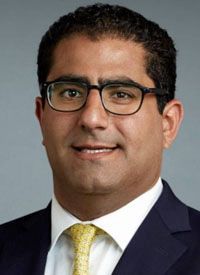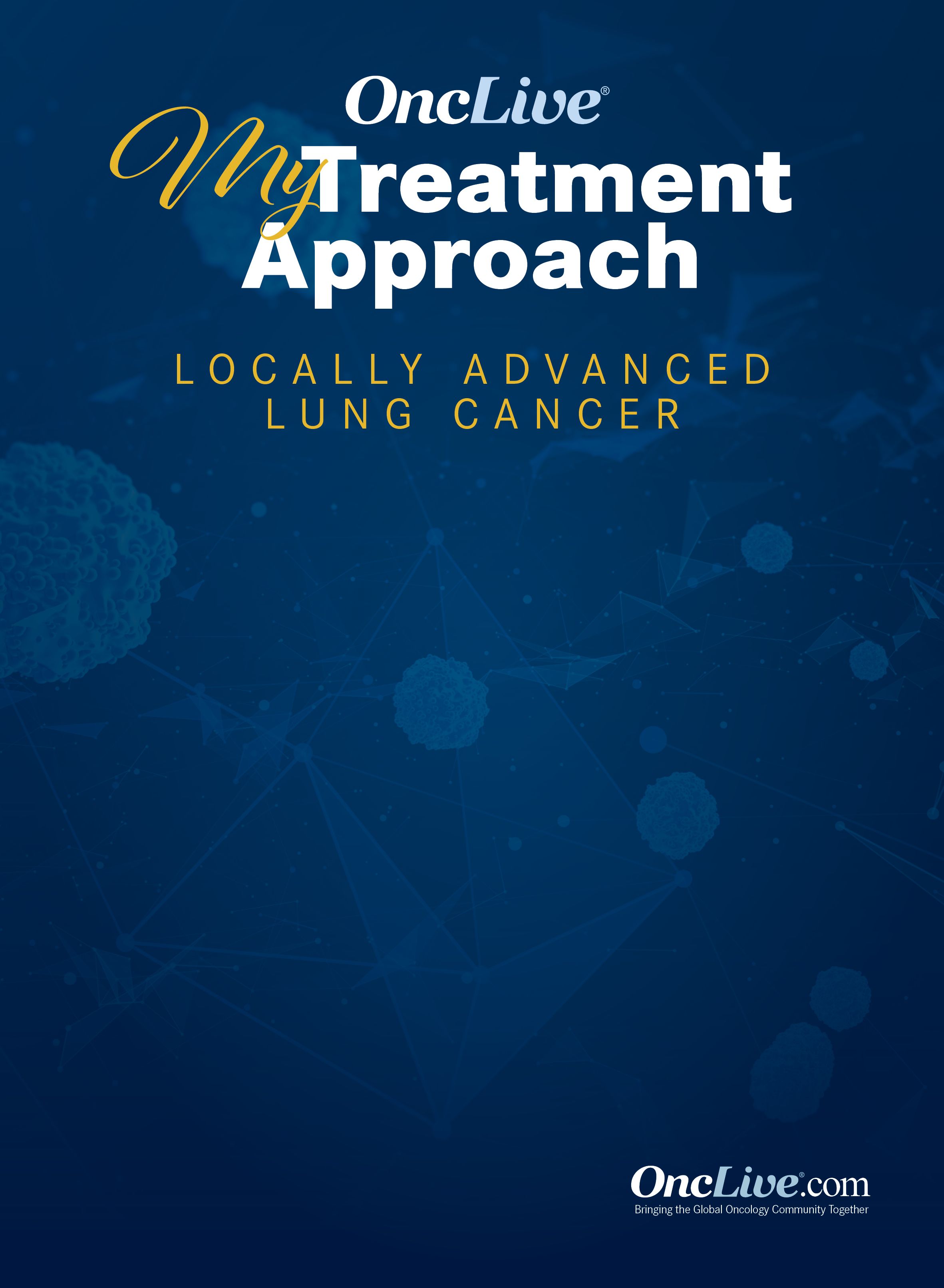Sabari Stresses the Importance of Molecular Testing in Lung Cancer
Joshua K. Sabari, MD, discussed the management of patients with early-stage and metastatic lung cancer, the roles of molecular testing, surgery, staging, and ongoing research efforts in the space.
Joshua K. Sabari, MD

Concurrent tissue- and plasma-based testing is needed in all patients to understand tumor heterogeneity, identify potential de novo resistance mutations, and ensure that existing mutations are not missed by potentially false negative results of liquid biopsy, according to Joshua K. Sabari, MD.
“Despite all of our advances in lung cancer, unfortunately this disease is often incurable,” explained Sabari. “Even in the era of immunotherapy, it is critically important to not forget molecular testing. PD-L1 expression alone is not sufficient to guide management or therapy. We need to molecularly interrogate our patients’ tumors with plasma and tissue testing.”
In an interview with OncLive®, Sabari, an assistant professor in the Department of Medicine at NYU Grossman School of Medicine at NYU Langone Health, discussed the management of patients with early-stage and metastatic lung cancer, the roles of molecular testing, surgery, staging, and ongoing research efforts in the space.
OncLive®: What factors do you consider when selecting treatment in the early-stage setting for patients with lung cancer?
Sabari:In the early-stage setting, meaning stage I, II, and resectable IIIA disease, I am always thinking about cure. For stage I and II disease, I think about up-front resection versus a potential clinical trial for neoadjuvant or adjuvant therapy. Stage IIIA disease is a lot more complicated, but I am usually thinking about neoadjuvant therapy up front, followed by resection if feasible.
However, there are a lot of nuances [in that space]. We, in oncology, think about what is causing this cancer to tick. [To that end], looking at the mutational profile of patients is critically important. For patients with early-stage disease who have an EGFR mutation, we now have an FDA-approved agent with osimertinib [Tagrisso] based on the ADAURA study for patients with resected, stage IB to IIIA disease post completion of adjuvant chemotherapy. That is something I am thinking about. We also now have a clinical trial called LCMC4 [evaluating] neoadjuvant therapy for patients with driver alterations, such as ALK and RET.
The problem with early-stage disease, particularly stage II and III disease, is that, despite optimal resection, the rate of recurrence is still high. We need to do everything possible to reduce that risk of recurrence. Using adjuvant chemotherapy works, but we need to improve upon that. We really need to look at [using] neoadjuvant immunotherapy in our patients who are potentially responsive to immunotherapy, such as those with PD-L1–high disease and those without driver mutations. In our driver population, we need to look at using targeted therapies in the earlier[-stage] setting. Seeing the FDA approval [of osimertinib] is exciting and shows where the field is moving.
Do you recommend up-front molecular testing for all patients?
Yes, I molecularly profile all patients with NSCLC, including adenocarcinoma and squamous cell NSCLC, and all stages of disease. The clear clinical benefit is for patients with stage IV [disease] because we can match patients to targeted therapy and improve their overall survival [OS]. We just saw data from the ADAURA study looking at earlier-stage patients; we saw disease-free survival [benefit with osimertinib], but we don’t yet have an OS [benefit]. With this approval and with the ongoing clinical trials that we discussed, it makes sense for patients, particularly if we have therapies that are available to them. I’m molecularly profiling all of my patients with plasma, as well as tissue next-generation sequencing [NGS].
With numerous systemic options available to patients, what roles do localized therapies play in the early-stage setting?
In the early-stage disease setting, I explain to the patient that their disease starts in the lung and stays in the lung. Patients need to have optimal staging imaging, as well as potential bronchoscopy and mediastinal staging. This depends on whether the PET scan reveals any FDG-avid lymph nodes or whether there is concern radiographically or clinically.
In a patient who has been staged appropriately with a PET scan, MRI brain [scan], and mediastinal staging, the role for surgery is clear. If a patient had resectable disease and the surgeon believes that they can remove the disease with R0 resection, clear bronchial and vascular margins, and [obtain] adequate lymph node dissection, I do believe there is a role for surgery.
Unfortunately, [patients with] stage III disease have a 75% risk of recurrence, whereas patients with stage II disease have about a 50% risk. In stage I disease, we are seeing cure rates in the 90% to 95% range, depending on what new data we look at.
Therefore, depending on the surgical expertise and the cancer center, there is a role for surgery alone, especially for patients with early, stage I disease and particularly for node-negative [tumors] that are less than 4 cm. For more complicated tumors that are greater than 4 cm or node positive, we are thinking about a neoadjuvant approach or potentially an adjuvant approach with some form of systemic therapy to increase the potential cure rate.
In the unresectable, stage IIIB and IIIC population, the standard of care is to give concurrent chemotherapy and radiation, followed by adjuvant or consolidative durvalumab [Imfinzi] based on the PACIFIC trial.
We have ongoing clinical trials looking at potentially giving neoadjuvant immunotherapy for 3 cycles, followed by concurrent chemotherapy and immunotherapy or radiation alone. We also have a potential study looking at a TGF-ß molecule in combination with immunotherapy in [an unresectable population]. The field is broad and rapidly changing, particularly for unresected patients, but a lot needs to be done here because our cure rates are unfortunately too low.
How has the coronavirus disease 2019 (COVID-19) pandemic affected early-stage lung cancer outcomes and/or treatment?
At NYU, we were part of the National Lung Cancer Screening study, which showed a 20% reduction in lung cancer–related mortality. Unfortunately, because of the COVID-19 pandemic, there has been a significant decrease in the rate of lung cancer screening. I think we are going to see an increased rate of later-stage lung cancer because of COVID-19. In general, patients are delaying care because of the pandemic.
That being said, patients have to be safe and cautious [when they come into the clinic]. A patient who is having symptoms, such as cough, shortness of breath, fever, and chills, needs to reach out to a doctor to discuss what to do, but we shouldn’t push lung cancer screening into the background. We should be thinking about curative options for all our patients, despite the pandemic.
How does treatment selection differ in the metastatic setting versus the early-stage setting?
In the metastatic setting, cure is not [as likely]. However, we might be moving toward [cure] in some disease states. In the stage IV setting, the goals of systemic therapy are to treat cancer-related symptoms and extend life, while hopefully providing good quality of life. In the stage IV setting, the key question is: What do we know about the cancer that we can use to select treatment? The standard of care for patients who are PD-L1 high is single-agent pembrolizumab [Keytruda] based on the KEYNOTE-042 trial and, more recently, the KEYNOTE-189 trial, which evaluated chemotherapy in combination with pembrolizumab for patients who are PD-L1 low or negative.
If a patient has a driver alteration that has an FDA-approved targeted therapy available, I am going to match the patient to that therapy. For example, if a patient has an EGFR mutation, I am matching them to osimertinib in the frontline setting. If a patient has a ALK fusion, I am matching them to alectinib [Alecensa] in the frontline setting. There are now 7 FDA-approved [therapies] for matched targeted alterations. Also, many clinical trials are available at our center for these patients, both in the targeted and non-targeted settings.
Also, I am always taking the patient’s point of view into account, [weighing] the options by going over adverse effect profiles and optimizing the patient’s quality of life. These points are critically important in 2021.
Do you always recommend concurrent plasma- and tissue-based testing for patients?
I am a big proponent of concurrent plasma- and tissue-based testing. The [benefit] of plasma-based testing is the rapid turnaround time. We are able to obtain molecular information within 7 business days. Most of the time, we are also able to understand tumor heterogeneity [from plasma-based testing] because it is not giving us a snapshot of the tumor, but rather allowing us to look at potential de novo resistance mutations in the tumor profile. Pending costs and insurance coverage, I am always offering up-front liquid biopsy with tissue testing.
I don’t think plasma-based testing is going to completely replace tissue testing. We still depend on tissue-based testing for histology. Tissue biopsy is also the gold standard because plasma NGS, although sensitive, has a high rate of false negatives. I tell patients that [plasma testing] can oftentimes be non-diagnostic. Therefore, having the NGS sent out is critically important.
For example, I saw a patient about 3 weeks ago who was a lifetime never-smoker. I was sure we were going to find a driver alteration, but their plasma NGS was negative. Lo and behold, we identified a MET exon 14 skipping mutation on tissue NGS 2 weeks later. The patient is now matched to capmatinib [Tabrecta] and doing quite well. So, waiting for the result is important, as is ordering the correct test. If I only relied on plasma NGS, the patient would have been on single-agent pembrolizumab because their PD-L1 expression was high. Ordering and waiting for the tissue assay to come back allowed me to match the patient to the best possible therapy for them.
How likely are you to recommend patients for clinical trials?
I am a huge proponent of clinical trials; however, they are not for everybody. I often discuss at least 1 or 2 trial options with my patients, and then I play it by ear. If a patient is interested in a clinical trial and the mechanism of the trial makes sense for them by building upon what we already know in the frontline setting, it makes sense. If the patient is not interested in a clinical trial, I offer standard therapy.
Back in the day, clinical trials were thought of as last lines of therapy. Now, if we look at the types of trials we’ve seen in the past 5 to 10 years, a lot of our studies [have looked at] the first- or second-line settings and have really changed management. [Therefore, offering clinical trials could have] a two-fold benefit: patients can potentially get better therapies and we could move the field forward.




